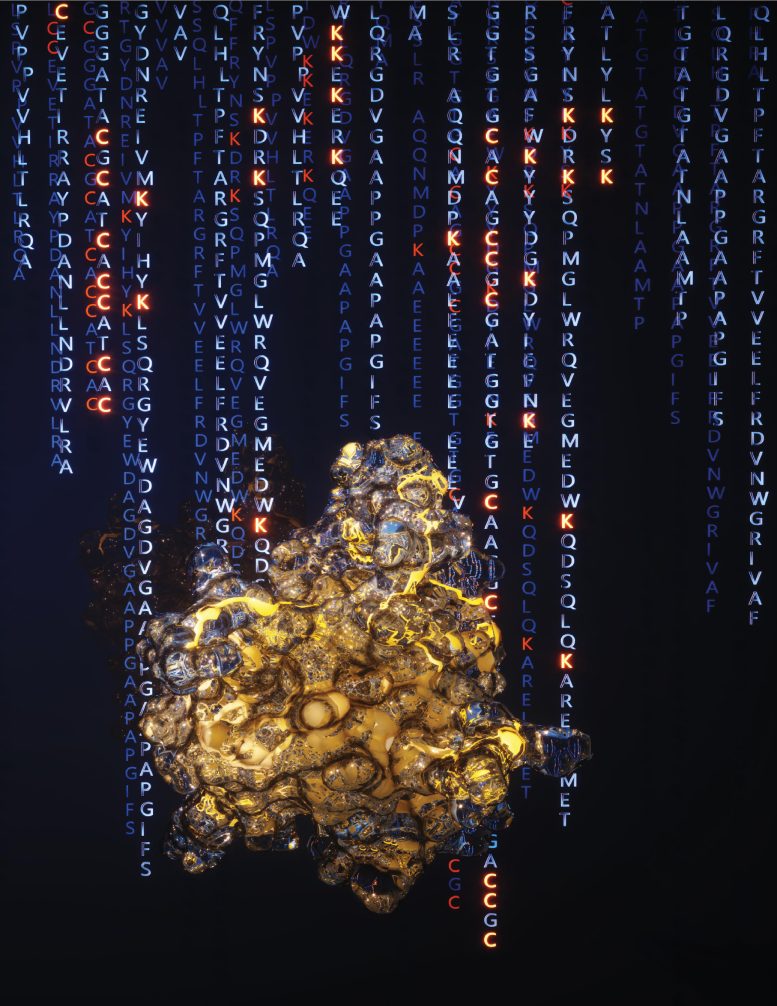
The illustration shows a human protein and amino acid code in the background. The new FRET X technology is capable of identifying proteins using protein fingerprints. The Chirlmin Joo Lab obtains these unique fingerprints by finding part of the full-length amino acid code (the highlighted C’s and K’s among the blue letters). Credit: TU Delft
In a study published in Nature Nanotechnology, scientists from Delft University of Technology introduced a new technique to identify proteins.
Proteins carry out essential functions in our cells, while playing a crucial role in diseases like cancer and
Incomplete IKEA project
“The study of proteins within cells has been a hot topic for decades, and has made huge advancements, allowing researchers to get a much better idea on what kind of proteins there are, and what function they carry out”, says Mike Filius, first author of the paper.
Currently, scientists use a method called mass spectrometry to identify proteins. The most common mass spectrometry approach is the ‘bottom-up’ approach, in which full-length proteins are cut into smaller fragments, called peptides, which are then measured by the mass spectrometer.
Based on the data from these small fragments, a computer reconstructs the protein.
Filius: “This is a bit similar to your typical IKEA project, where you’re always left with some spare parts you’re not really sure how to fit in. But in the case of proteins, these spare parts may actually contain very valuable information, for example about whether or not such a protein has a harmful structure that causes a disease.”
The protein fingerprint
“In order to identify a protein, you don’t need to know all of the